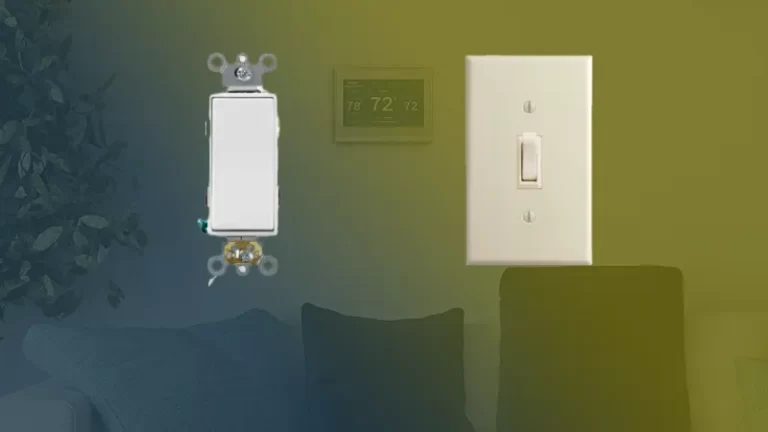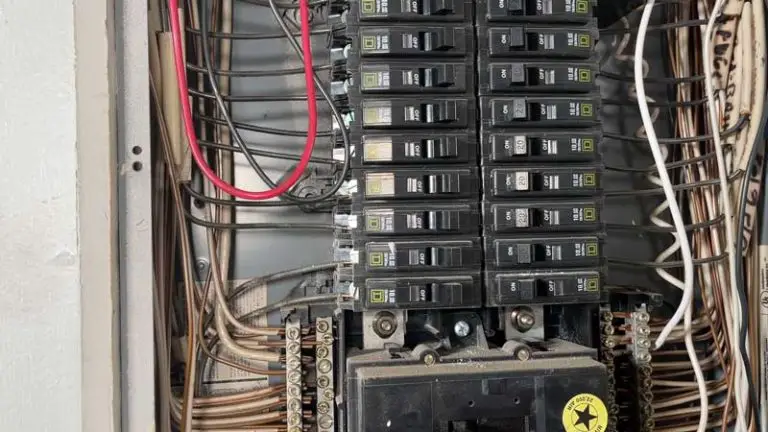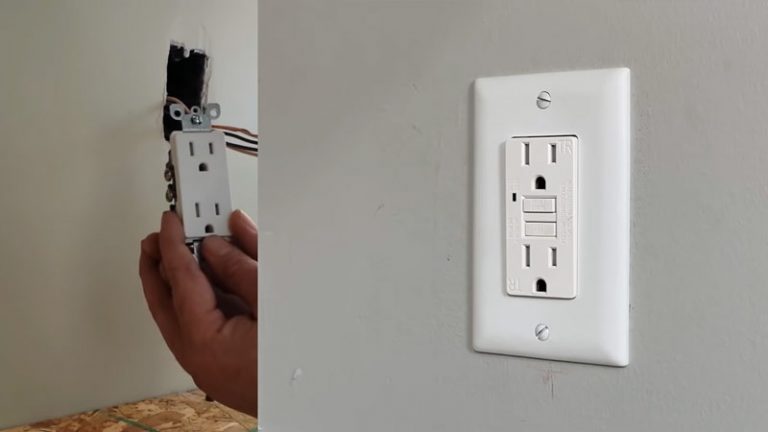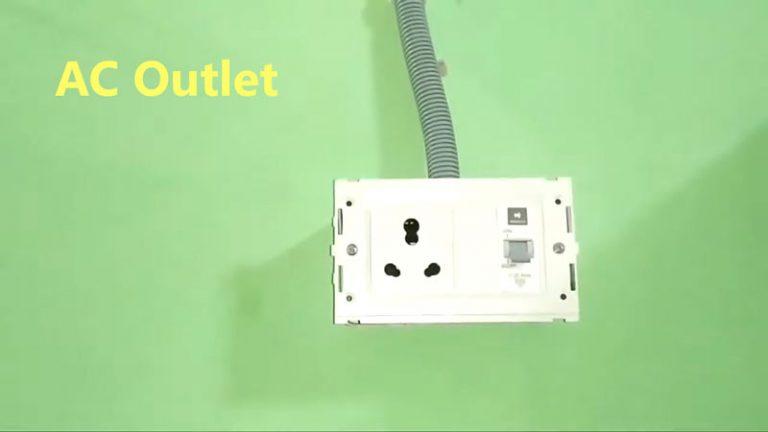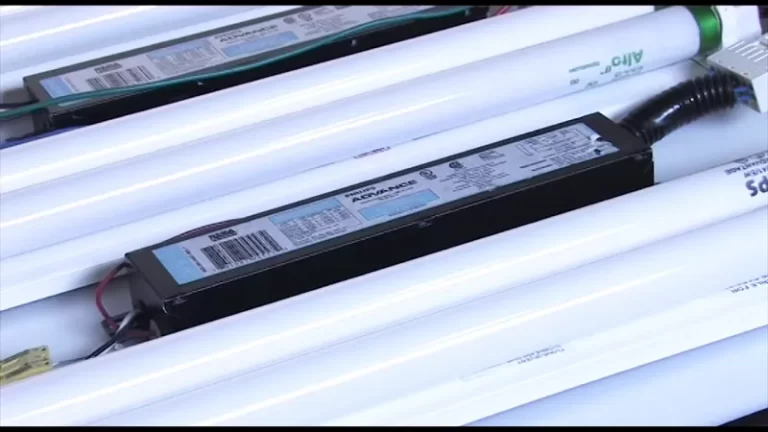Can I Connect the Green Wire to the White Wire?
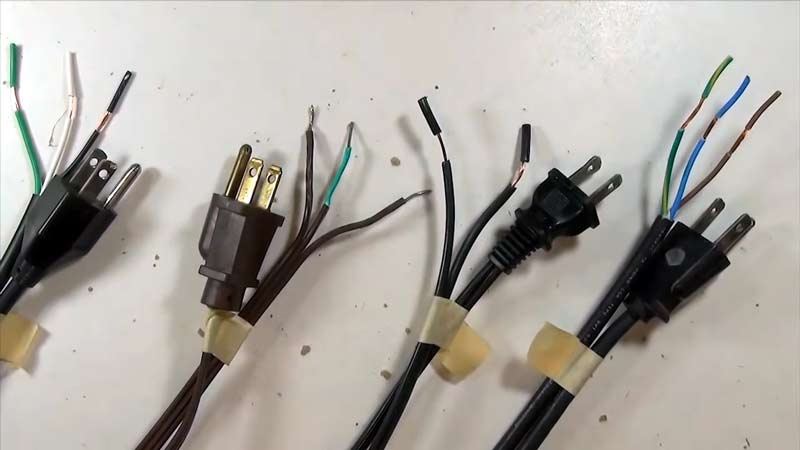
Before connecting any wires in your house, determine the function of each wire. Wires come in different colors and have different purposes. You must connect them to the correct terminals for their functions to work correctly.
Several terminals are located throughout a house. Keep an eye out for them when wiring your home. Knowing which terminal goes where can make troubleshooting easier if something goes wrong.
You'll Learn About
Is it Okay to Connect the Green Wire to the White Wire?
The straightforward answer is NO! When connecting wires in a circuit, be aware of the sequence in which you connect them.
Sometimes, when wiring a circuit, it’s helpful to connect the black wire to the white wire and the green wire to the red wire. This way, all circuits are connected together. However, you can’t do that in this case because there is already a green wire connecting one of these wires to the ground.
The green wire (grounding) should always be connected to another green wire – NEVER to a white wire. If something goes wrong and you are not sure which wire is grounded, touching both wires together will create an electrical current and let you know which one is the ground connection.
You cannot connect the green wire to the white wire because they are not meant to be connected. The green and black wires on your car’s electrical system are designed for specific systems, like starting and charging your battery. Connecting them incorrectly could cause problems with your car’s functionality.
You can connect the green wire to the white wire if you are unsure which is the ground wire in your home. Most circuits have hot, neutral, and grounding wires. However, some homes do not have ground wires. This is especially true for houses built decades ago before grounding systems became the norm.
If you are unsure which wire is grounded, connect the green wire to a metal part of your house (like a water pipe) to find out which one is connected to the earth or ground. If you cannot find any metal parts near where the green and white wires meet, use an electrician to make a connection between them using a three-wire cable with a black and red stripe down one side.
A Better Explanation
You cannot connect the green wire to the white wire because the green wire is connected to the MAF sensor and the white wire is connected to the injector.
You Cannot Connect the Green to the White
Power connections are very important for the health and safety of your home. You should only connect white and green wires together when they are both attached to the same appliance or fixture. This ensures the current moves in the correct direction and there is no risk of electrical shock.
Also, do not connect white and green wires on a cable together when they are connected to the same appliance or fixture. This is because you cannot tell which wire is the hot wire and which is the neutral wire.
The Cable Guides the Electrical Current
A cable guide is a piece of wire attached to one side of a wall. It is designed to keep wires from touching each other. The cable guide is typically connected to the ground wire of all appliances and fixtures. If the cable does not have a ground wire, do not connect it to any other wires.
Only Connect Grounding Wires to Other Grounding Wires
You cannot connect grounding wires to each other. Each electrical system is grounded by a separate ground wire. If any ground wires come in contact with another ground wire, it can cause a short circuit.
It is important to know when your wiring is connected to a ground wire. You can use any wire as a ground wire, but remember which one is the ground wire. If the ground wire of a device is touched by an appliance, that appliance is connected to the ground wire.
For example, if you have a lamp connected to a ground wire, anytime that lamp is turned on, it is connected to the ground wire and therefore to each appliance connected to the ground wire.
If you don’t have a ground wire in your home, you can install some components like a light fixture without a ground wire easily.
The Solution
Don’t worry if this seems confusing at first. Just remember that all wires have some function within your electronic devices. If your device isn’t working, check for continuity between each connection. If there’s no connection, chances are your ground wire has been disconnected.
Keep cords organized by grouping like colors together. Store them away where they can’t get tangled or damaged. Preferably, store them next to an outlet so you can plug in whatever needs charging when needed.
There is no correct answer when it comes to connecting the green wire to the white wire. You will need to experiment until you find a configuration that works for you.
The most important thing is to ensure both wires are protected from shocks and other damage. This could cause them to short out and create sparks. Here are some rules you can follow:
- It is not necessary to connect the green wire to the white wire when installing a new connection in your home.
- Connecting the wrong wires can damage your electrical components and might even cause them to fail. Make sure you connect the correct wires to each component of your battery pack before beginning installation.
- When connecting batteries, ensure alligator clips are securely fastened around both ends of the cables. This prevents them from becoming entangled during operation and ensures safe operation and long-lasting battery life.
Green Wire Connect To Black
If you’re not sure which wire goes to what, call an electrician. Bare black wires can be dangerous and should only be connected to other black and red wires. Connecting the wrong wire could cause a power outage or worse, death.
Make sure all your devices are properly plugged in before connecting any wires. This will avoid any possible damage or injury. The green wire does not connect to the black wire. Keep that in mind if you’re trying to hook up something else in your home, like a TV or stereo. It may not work correctly without the correct connection made between those two pieces of equipment.
White Wire and Green Wire Shouldn’t Be Connected
When installing your home wiring, connect the green grounding wire to another green cable. If there’s a malfunction with one of your wires and it sparks or creates an electrical shock, the grounded wire will help protect you from harm.
You can only join white wires together if they’re neutral. This is important so that electricity doesn’t flow in unintended directions during an emergency. Wiring colors are common sense – don’t mix them up when connecting cables.
White wires provide a path for electricity to follow if something goes wrong. Green grounding wires keep everything safe and stable near the earth’s surface, even in case of a power outage. It may seem like a hassle, but following these simple rules will keep everyone safe in an emergency and maximize your home’s functionality overall.
Connecting Neutral To Ground
If you connect a neutral wire to the ground on your device, this will cause the chassis of your device to be at the “hot” voltage, which is very dangerous. Make sure any wires connected to the ground are properly insulated and double-checked for continuity before making this connection.
Disconnecting anything incorrectly could result in fire or injury. Always use caution when working with electricity and follow all safety guidelines closely. Be aware of what happens if you make a mistake while connecting wires—stay safe and stay informed.
Connecting the green wire (ground) to the white wire (neutral) is unsafe and violates electrical codes. The green wire is designed to provide a safe path for electrical faults, while the white wire carries current back to the panel. Mixing these can create a shock hazard or damage your electrical system. Always follow proper wiring practices and consult a licensed electrician if unsure.
If you’re working on electrical projects, you might also want to explore Snapper Pro S200xt problems and solutions for maintaining your outdoor tools. Additionally, understanding the differences between Echo SRM 2620 and 2620T can help you choose the right equipment for your needs.
To Recap
The white wire should be connected to the neutral terminal on the electrical outlet. The green wire should be connected to the ground terminal. If you are not sure which wire is which, look for a symbol indicating which color is for what purpose. This is usually in writing near each wire connection point.
If you still have questions after following these instructions, contact an electrician or check your breaker panel. Making mistakes when wiring can result in dangerous currents running through your home, so take care when completing this project.
Frequently Asked Questions
Why do you tie the neutral and ground together?
By tying the neutral and ground together at a subpanel, you allow them to share some of their power. This helps keep your home’s wiring stable and reduces energy costs in the long run. It also helps connect any other electrical devices nearby so they can work more efficiently together.
You can do this by drilling small holes into both pieces of insulation, then routing the wire through them carefully. Use heat-shrink tubing or cable ties around each connection point for extra security.
Can neutral and earth be connected together?
Neutrality is a key principle in the electrical system. It helps prevent shocks and fires. The ground circuit is connected to the earth, which helps protect your home from spikes and other electrical problems.
You can connect neutral circuits with each other if you need extra protection or want to reduce interference from other appliances in your home. To ensure all devices are working correctly, check whether they’re connected properly to the ground circuit before turning them on.
Make sure any new additions or changes to your electrical system are coordinated with an electrician. This prevents disrupting neutrality or causing sparks or fire hazards.

